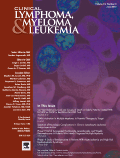
Clinical Lymphoma Myeloma & Leukemia
Scope & Guideline
Empowering Oncology Through Rigorous Scholarship
Introduction
Aims and Scopes
- Clinical Trials and Treatment Protocols:
The journal publishes studies related to clinical trials, particularly those evaluating the efficacy and safety of new therapies for hematological malignancies, including various combinations of chemotherapy, immunotherapy, and targeted therapies. - Patient Outcomes and Quality of Life:
Research focusing on the clinical outcomes of patients undergoing treatment for blood cancers, including survival rates, quality of life assessments, and the impact of treatment on patient well-being, is a core area of interest. - Molecular and Genetic Research:
The journal highlights studies that explore the molecular and genetic underpinnings of hematological malignancies, including the identification of biomarkers for diagnosis, prognosis, and treatment response. - Epidemiology and Health Disparities:
It addresses the epidemiological aspects of hematological malignancies, including studies on incidence, prevalence, and disparities in treatment access and outcomes among different populations. - Innovative Therapies and Novel Approaches:
Focus on emerging therapies, including CAR-T cell therapies, bispecific antibodies, and other novel agents, as well as their mechanisms of action and potential to improve patient outcomes.
Trending and Emerging
- CAR-T Cell Therapies and Bispecific Antibodies:
There is a growing body of research on CAR-T cell therapies and bispecific antibodies, particularly in their application for treating relapsed and refractory multiple myeloma and other hematological malignancies. - Minimal Residual Disease (MRD) Monitoring:
The focus on MRD as a prognostic marker is increasing, with studies exploring its implications for treatment decisions and patient management, particularly in multiple myeloma and acute lymphoblastic leukemia. - Health Disparities and Access to Care:
Emerging research emphasizes the importance of understanding health disparities in hematological malignancies, particularly regarding treatment access and outcomes among diverse populations. - Patient-Reported Outcomes and Quality of Life:
There is a heightened interest in assessing patient-reported outcomes and quality of life, reflecting a shift towards patient-centered care in the management of hematological malignancies. - Integration of Genomic and Proteomic Data:
The integration of genomic and proteomic analyses to inform treatment choices and understand disease mechanisms is gaining traction, leading to more personalized treatment approaches.
Declining or Waning
- Traditional Chemotherapy Regimens:
There is a noticeable decrease in studies centered around traditional chemotherapy regimens as newer targeted therapies and immunotherapies gain prominence in treatment protocols. - Longitudinal Studies of Established Treatments:
Long-term studies evaluating the efficacy of established treatments such as older chemotherapy agents have become less frequent as the focus shifts towards innovative therapies and combination regimens. - Basic Science Studies Without Clinical Relevance:
Research that does not directly translate into clinical applications or lacks immediate relevance to patient care appears to be waning, as there is a stronger emphasis on studies that can lead to actionable insights in clinical practice. - Palliative Care Studies:
The volume of research specifically addressing palliative care approaches for hematological malignancies seems to have decreased, possibly overshadowed by the focus on curative and novel treatment strategies. - Single-Agent Studies:
The exploration of single-agent therapies is less common as the field increasingly favors combination therapies that leverage synergistic effects to enhance treatment efficacy.
Similar Journals

Bladder Cancer
Fostering innovation in the realm of urological oncology.Bladder Cancer, published by IOS PRESS, is a premier open access journal dedicated to advancing the field of oncology and urology, with a specific focus on bladder cancer research and treatment. Established in 2015 and continuing through to 2024, this journal aims to disseminate high-quality, peer-reviewed research that contributes to the understanding, diagnosis, and management of bladder cancer, a critical area of concern in urological oncology. With a robust publication record now encompassing open access since 2023, Bladder Cancer ensures accessibility to vital research for clinicians, researchers, and scholars worldwide. The journal's rankings in Scopus reflect its commitment to excellence, holding a Q3 category in both oncology and urology, with Scopus ranks of #78 in Urology and #285 in Oncology, showcasing its growing influence in the scientific community. By fostering dialogue and innovation, Bladder Cancer serves as an essential resource for those committed to improving patient outcomes in bladder oncology.

BLOOD REVIEWS
Unveiling the latest in blood research and treatment.BLOOD REVIEWS is a highly regarded journal published by Churchill Livingstone, specializing in the fields of Hematology and Oncology. With an impressive Q1 ranking in both disciplines and placing in the top 10% of its peer categories according to Scopus metrics, it provides an essential platform for the dissemination of cutting-edge research and reviews pertaining to blood disorders and cancer treatment. Since its inception in 1987 and continuing through 2024, the journal has established itself as a cornerstone for healthcare professionals, researchers, and students who seek to advance their understanding of hematologic and oncologic topics. While not an open-access journal, BLOOD REVIEWS retains a reputation for delivering high-quality, peer-reviewed articles that foster dialogue and innovation within the scientific community. For those in the United States and beyond, the journal serves as a vital resource, housed at the Journal Production Department in Edinburgh, Scotland, ensuring accessibility and a global reach in its critical academic contributions.
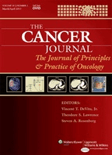
CANCER JOURNAL
Uncovering the Mysteries of Cancer for Better Care.CANCER JOURNAL is a leading peer-reviewed publication dedicated to the dissemination of innovative research in the fields of cancer research and oncology. Published by Lippincott Williams & Wilkins, this journal serves as an essential resource for researchers, clinicians, and students seeking to advance their understanding of cancer mechanisms, treatment strategies, and patient care. With an ISSN of 1528-9117 and an E-ISSN of 1540-336X, it boasts a respectable 2023 Q2 category ranking in both Cancer Research and Oncology, reflecting its impactful contributions to the scientific community. Although it currently does not offer open access, the journal's rigorous peer-review process ensures the publication of high-quality, relevant studies that stimulate further investigation and collaboration among professionals. Since its inception, the journal has evolved through several converged years, maintaining a steadfast commitment to addressing the complexities of cancer biology and treatment. At its core, CANCER JOURNAL aims to foster advancements in oncology, making it a vital platform for sharing pivotal findings that could transform cancer research and therapeutic practices.

World Journal of Oncology
Advancing cancer research, one study at a time.The World Journal of Oncology, published by ELMER PRESS INC, is a vibrant platform for disseminating groundbreaking research and advancements in the field of oncology. With its ISSN 1920-4531 and E-ISSN 1920-454X, this journal is dedicated to publishing high-quality studies that enhance our understanding of cancer and its treatment. The journal is recognized for its significant contributions, evidenced by its Q2 classification in both Cancer Research and Oncology categories in 2023, and accolades such as a Scopus rank of #126/404 in Medicine _ Oncology. Catering to the needs of researchers, professionals, and students, the World Journal of Oncology offers an essential resource for the latest scientific insights and clinical practices, ensuring the global oncology community remains informed and engaged. The journal operates under a selective publication model, maintaining rigor in peer review while facilitating knowledge sharing across converged years from 2014 to 2016 and 2020 to 2024, further establishing its importance in the ongoing fight against cancer.
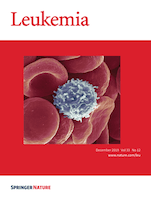
LEUKEMIA
Empowering Researchers, Transforming LivesLEUKEMIA, published by SpringerNature, is a premier journal in the field of hematology and oncology, with ISSN 0887-6924 and E-ISSN 1476-5551. Established in 1987, this esteemed publication serves as a critical platform for disseminating groundbreaking research and comprehensive reviews on the pathophysiology, diagnosis, and treatment of leukemia and related hematological disorders. With a distinguished impact, it holds a top-tier status in several categories, including Q1 rankings in Anesthesiology and Pain Medicine, Cancer Research, Hematology, and Oncology for 2023. The journal is globally recognized for its rigorous peer-review process and is highly regarded among academia, evidenced by its impressive Scopus rankings—7th in Hematology and 24th in Oncology. Researchers, clinicians, and students alike will benefit from the rich content that this journal offers, making it an invaluable resource in the fight against leukemia. The main objective of LEUKEMIA is to advance knowledge and encourage further innovations within the field, ensuring that vital insights reach practitioners and researchers around the world.
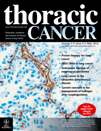
Thoracic Cancer
Shaping the landscape of thoracic cancer research.Thoracic Cancer is a distinguished open-access journal published by WILEY, dedicated to advancing the field of thoracic oncology. Since its establishment in 2010, the journal has emerged as a crucial platform for the dissemination of innovative research and clinical studies relating to lung cancer and other thoracic malignancies. With a commendable impact reflected in its 2023 Q2 rankings in the categories of Medicine (Miscellaneous), Oncology, and Pulmonary and Respiratory Medicine, the journal features high-quality articles that are vital for researchers, clinicians, and students aspiring to enhance their understanding of thoracic cancers. Operating out of Australia, Thoracic Cancer has embraced a commitment to open access since 2015, ensuring that vital research is readily available to a global audience. The journal's rigorous peer-review process and emphasis on novel findings make it an indispensable resource for professionals seeking to stay at the forefront of this rapidly evolving field.
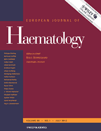
EUROPEAN JOURNAL OF HAEMATOLOGY
Pioneering Discoveries in Blood Disorders and TherapiesEUROPEAN JOURNAL OF HAEMATOLOGY, published by Wiley, serves as a vital resource for experts in the field of hematology, focusing on the latest advancements in blood disorders and therapies. With an ISSN of 0902-4441 and an E-ISSN of 1600-0609, this esteemed journal has been disseminating knowledge since 1986 and continues to thrive, converging its visionary approach through to 2024. Notably, it holds a distinguished Q2 ranking in Hematology and an impressive Q1 ranking in the broader category of Medicine (miscellaneous) as of 2023, highlighting its significant contribution to the scientific community. With a Scopus rank of #45/137 and a 67th percentile in the field, the journal is recognized for its rigorous peer-reviewed research, making it an indispensable publication for researchers, practitioners, and students aiming to stay at the forefront of hematological studies. Though not an open-access journal, it ensures broad accessibility to critical findings via its subscription model, thus fostering an informed and globally engaged audience.
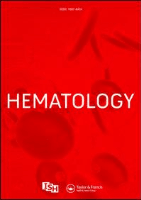
Hematology
Connecting Minds: Advancing the Science of Hematology TogetherHematology is a distinguished open-access journal published by Taylor & Francis Ltd, dedicated to advancing research and knowledge in the field of hematology. Established in 1996, the journal has continually evolved to meet the needs of a growing community of researchers and practitioners, providing a vital platform for disseminating innovative findings and clinical insights. With its impact factor reflecting a robust commitment to quality scholarship, Hematology has achieved a respectable position in its category as evidenced by its Q3 ranking in the Hematology category and ranks #85 out of 137 in the Scopus index, which positions it in the 38th percentile among its peers. The journal’s open-access policy, initiated in 2019, further enhances its reach and accessibility, allowing a broad audience of professionals, researchers, and students to engage with high-quality research without barriers. By covering a wide range of topics related to blood disorders, treatment methodologies, and emerging therapies, Hematology stands as an essential resource for those dedicated to innovation in this critical area of healthcare.
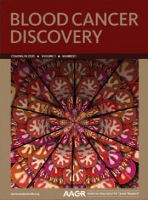
Blood Cancer Discovery
Catalyzing Change in Cancer Research LandscapesBlood Cancer Discovery is a premier academic journal published by the American Association for Cancer Research, dedicated to advancing the understanding of hematologic malignancies through cutting-edge research in the fields of oncology, biochemistry, and molecular biology. With an impressive impact factor and recognition as a Q1 journal across multiple disciplines, including cancer research and hematology, Blood Cancer Discovery serves as an essential platform for scholars and practitioners alike, facilitating impactful discourse and dissemination of pioneering findings. This open-access journal, established within the vibrant academic landscape of the United States, aims to bridge gaps in research and foster collaborations to ultimately enhance patient outcomes. Its Scopus rankings demonstrate its vital role in the critical advancement of cancer research and therapeutic development. By inviting contributions from a diverse range of disciplines, Blood Cancer Discovery is poised to drive innovation and inspire future advancements in understanding blood cancers.
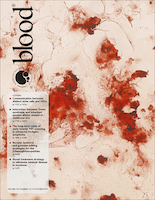
BLOOD
Elevating Excellence in Hematological Studies.BLOOD, published by the American Society of Hematology, is a premier peer-reviewed journal in the fields of Biochemistry, Cell Biology, Hematology, and Immunology. With an impressive impact factor and ranking in the top quartiles (Q1) across multiple disciplines, BLOOD is essential reading for researchers and professionals seeking to stay updated on the latest advancements in hematology and related fields. The journal has been a cornerstone of hematological research since its inception in 1946, providing a platform for rigorous scientific inquiry and discourse. Its commitment to publishing high-quality original research, comprehensive reviews, and insightful editorials makes it a vital resource for students, practitioners, and scientists alike. By offering exceptional access to influential publications, BLOOD continues to shape the future of hematology and enhance understanding of blood-related disorders, marking its vital role in advancing both basic and clinical research.